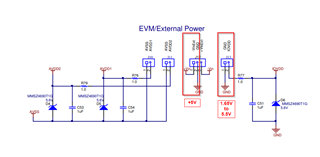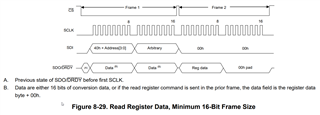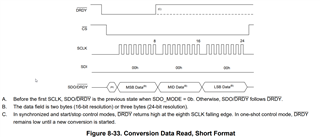Other Parts Discussed in Thread: ADS127L11
I used Teensy® 4.0 Development Board for spi communication.
First i try to read or write the register of ADS127L11 IC but when i try to read particular register value i got 0x00.
Hardware Side:
I give 5V on J12 in +Vin.
Attached JP4 jumper with 2&3 No pin.
Remove JP3 jumper.
Attached JP7 jumper with 2&3 No Pin.
Attached JP6 jumper with 1&2 No Pin.
firmware side:
I make Start and Reset Pin high.
I send 0x4C 0x00 0x00 frame in SDI.





